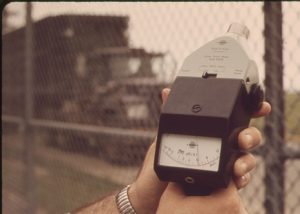A sound level meter, also known as a noise meter is a device used for acoustic measurements. The word “acoustic” is another term for “sound that travels through the air.” This is in opposition to the word “audio,” which is a term that is also often used in the field of sound measurement. Audio is the sound that travels electronically. It goes through cables and audio components before being released into the air as sound. With that said, this article will talk about the sound level meter. What is noise meter, and why is it relevant for people who are measuring sound? Let’s find out!
What is a Sound Level Meter?
A sound level meter requires a microphone to measure the changes in air pressure produced by the sound source. The better the quality of your microphone, the more accurate your measurement is going to be. These measurement microphones are categorized as Class 1 and Class 2. The latter is known to be more accurate than the former. However, the difference is only subtle; but it’s more than enough. Class 1 microphones are usually required only when the law prescribes it. That means whichever mic you use, it’s essential for accuracy that the microphone is calibrated correctly.
What is Noise Meter?
 Here are other things you need to know about the sound level meter:
Here are other things you need to know about the sound level meter:
Broadband Level
The single value that’s measured by a noise meter is referred to as the “broadband value.” It uses all values across the audio frequency bands to calculate the exact sound level. The measurement of sound if typically measured in decibels (dB), which is among the logarithmic unit. So, for instance, doubling the sound level would immediately correspond to a 10 dB higher measurement value.
Real-Time Analyser RTA
The circle or frequencies provided by a real-time analyser measurement is ideal for tasks such as the adjustment and optimisation of sound systems and sound rooms. An RTA usually measures with a resolution of 1/1 or 1/3 octave. When conceptualising this, you can think of a piano as an excellent example. 1/1 gives us a single measurement value of each octave, 1/3 provides a single group value of 4 semitones, 1/6 represents 1 semitone, while 1/12 is a different level measurement for every key on the piano.
So, what is noise meter? It’s an instrument that helps you determine the level of sound you produce with your instruments. Buy one now! Visit our online store to purchase a high-quality sound level meter.